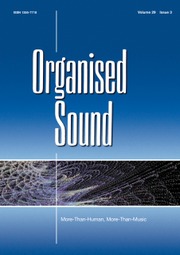No CrossRef data available.
Article contents
Soundscapes of Papua: Cultural-based pedagogical approach through electroacoustic music
Published online by Cambridge University Press: 11 April 2025
Abstract
This article investigates the innovative pedagogical approaches and cultural integration of electroacoustic music in Papua, Indonesia, through the work of composer and educator Markus Rumbino. Born in 1989 in Jayapura, Papua, Rumbino is the first professional electroacoustic composer from eastern Indonesia. After returning to Jayapura in 2013 to join the Institute of Arts and Culture (ISBI) Tanah Papua, he faced unique challenges in a region where electroacoustic music is largely unfamiliar and often misunderstood. The study explores how Rumbino bridges Western music education with Indigenous Papuan sound environments to foster cultural identity and confidence among his students – primarily Indigenous from East Indonesia, including natives from the Papuan Highlands with limited formal musical training. Through detailed interviews and analysis, the article examines his innovative use of soundscape composition, listening exercises and soundwalk methodologies as pedagogical tools. By engaging students in critical listening and exploration of their local soundscapes, Rumbino reconnects them with their cultural heritage while introducing contemporary artistic expressions. Situating his methods within the broader context of soundscape literature and inclusive educational practices in electroacoustic music, this article highlights the transformative potential of integrating local soundscapes into music education. This contributes to discussions on culturally responsive teaching methods and the role of environmental sounds in fostering musical creativity.
- Type
- Article
- Information
- Copyright
- © The Author(s), 2025. Published by Cambridge University Press



